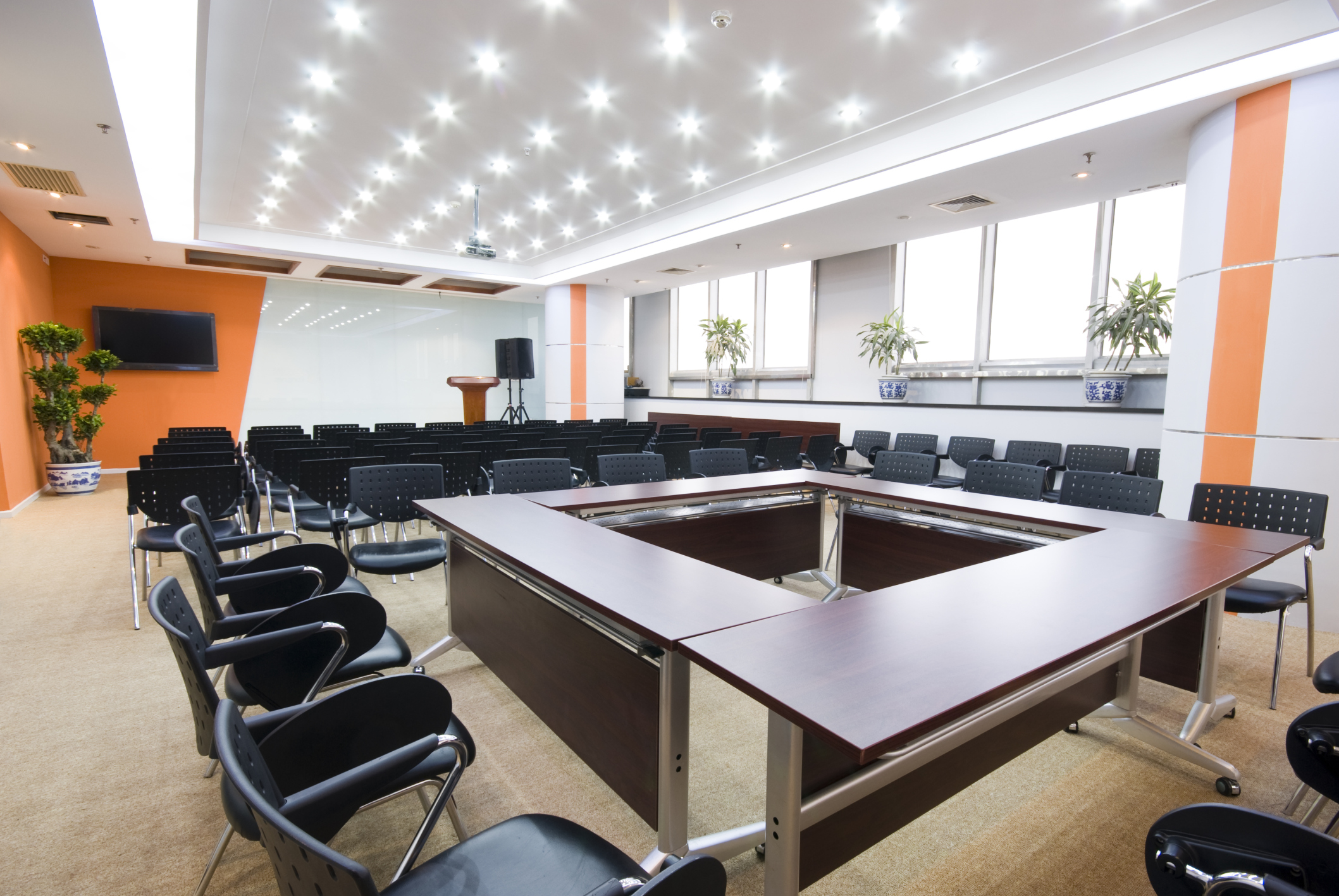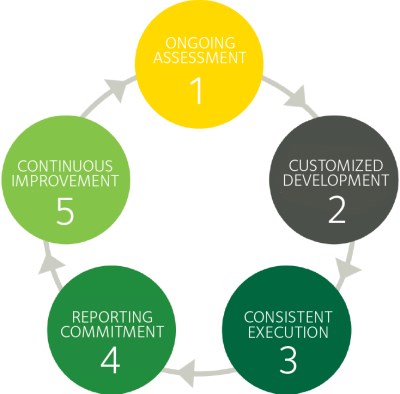
With all the focus on high-tech solutions and new sustainable architecture, we would like to take the time to recognize the day-in and day-out occupants of our built environment. Their behavior is a key ingredient to helping organizations reach sustainability goals. In typical commercial buildings, occupants are responsible for 50 to 75 percent of energy consumed through their use of lighting, equipment, and HVAC. How can you harness the power of the crowd in your buildings? Try some of these strategies:
Paper
- Print double-sided or print to PDF.
- Use less packaging (buy in bulk).
- Use electronic documents.
- Give employees resources to contact providers of direct mail to reduce junk.
- Use smaller margins, font size, and leading in templates to lessen the number of pages per document printed.
- Do not use a separate cover sheet when faxing.
- Use interoffice envelopes instead of new envelopes where possible.
- Encourage paperless and clean-desk policies to help eliminate clutter, reduce use of raw materials, and help keep the office dust free.
- Instead of providing hard copies of presentations and briefings, have employees bring laptops to meetings to view copy of presentations.
- Keep all paper dry as wet paper cannot be recycled.
Technology
- Eliminate fax machines and move to e-fax technology.
- Turn off computer and monitor at the end of the day.
- Enable standby mode on your computer during breaks.
- Set monitor displays to shut down when not in use.
- Unplug unused devices.
Supplies
- Reuse office supplies such as binder clips, paper clips, file folders, binders, and tape flags.
- Collect reusable bags from conferences and other events and provide for use by office as needed.
- Eliminate physical rewards such as certificates and plaques; instead provide gift cards or more sustainable gifts that do not add to office clutter.
- Provide separate recycling for electronics, batteries, and light bulbs.
- When office materials (including furniture and equipment) must be replaced, search for take-back and salvage programs.
Food
- Collect plastic bags and provide for reuse by staff or for take home (they make great trash bags for bathrooms, pet waste bags, dirty gym clothes bags, etc.).
- Before events and meetings, send an e-mail reminding attendees to bring mugs or reusable cups if beverages will be served.
- Avoid purchasing boxed meals.
- Use less bottled water.
- Eliminate Styrofoam products.
- Drain all liquids from plastic bottles.
- Wash and rinse any food remains and pour away excess liquid before placing containers in the recycling bin.
Lights
- Turn off lights.
- Lower blinds when the sun is at its peak.
Education and Enrollment
- Educate employees on office consumption (such as energy and water usage, trash generation, etc.).
- Encourage the formation of green teams.
- Post employee manuals and similar materials online rather than distributing paper copies.
- Host in-office education sessions on how to engage in sustainable behaviors in the office.
- Create joint-purchasing programs with other tenants in the building to buy supplies in bulk.
- Encourage employee exchanges by setting up informal lending libraries for items such as books, magazines, CDs, and DVDs. Or, set up days for people to bring in items to swap; anything not taken at the end of the day could be given to charity.
- Offer incentives for employee engagement in sustainable behaviors.
- Support a casual dress code to allow comfort and greater temperature variation (wear boots in the winter and short-sleeves in the summer).
- Encourage the use of stairs over elevators.
- Provide clear signage on what should be recycled/composted/ thrown away.
- Adopt health and wellness initiatives.
Transportation
- Provide bike share or car share options.
- Provide bike racks and showers.
- Provide rideshare information or carpool boards.
- Subsidize transit.
- Provide carpool/vanpool/energy-efficient car parking.
- Offer flexible work arrangements or compressed work weeks to reduce peak-time commuting.
Travel Reduction
- Provide teleconferencing capabilities.
- Use web meetings through mediums such as Live Meeting, Office Communicator, SharePoint, and TelePresence.
- Travel only if essential for business purposes.
- Opt for rail over air.
- Select environmentally preferred hotels.
- Rent a fuel-efficient vehicle.
- Use online conferences; limit conference attendance and have employees report back to the rest of the organization.
Single Occupancy Vehicle or Fleet Vehicle Protocols
- Consider a partial- or zero-emissions vehicle.
- Use a small car for commuting.
- Tune up.
- Fill air in tires.
- Combine trips when possible.
Green Protocols to Consider as Part of Building Operations
Whether a facility is owned or leased, the size of a facility, the length of lease, and other factors determine the level of control a company has over the operation of a building it occupies. That said, consider the following as a checklist for affecting operations at the building or floor level:
Energy
- Turn off the heating, ventilating, and air-conditioning system when employees are not working in space, i.e., from 6:00 p.m. to 6:00 a.m. every day and on weekends.
- Use programmable thermostats.
- Install meters or submeters to track energy and water use.
- Clean HVAC filters regularly.
- Use high-efficiency hand dryers instead of paper towels.
- In buildings with operable windows, ensure all windows (and storm windows, if applicable) are closed tightly.
- Consider setting hot water heaters to lower temperatures (120 degrees Fahrenheit should be sufficient).
- Purchase energy using renewables when possible.
Water
- Use potable water only when needed for health or safety reasons.
- Use low-flow tabs or tab aerators.
- Install dual-flush and low-flow toilets.
- Install waterless or low-flow urinals. Ensure cleaning staff is educated in proper maintenance of waterless urinals.
Recycling
- Provide recycling collection area.
Cleaning
- Encourage cleaning companies to clean spaces during the day in order to reduce energy use during off-hours.
- Use Green Seal certified cleaning products.
- Add plants to the office to help clean the air (but be sure to keep them clean and healthy so they do not contribute mold spores or get dusty).
- Implement integrated pest management.
Other
- Regularly audit facilities for leaks and other areas where energy and water might be wasted (such as dimmable light switches that get stuck just before the off position).
- Engage in commissioning as part of project and beyond.
- Consider third-party reporting.
These points are adapted from BOMI International's course High-Performance Sustainable Building Principles, part of the new High-Performance Program. Visit bomi.org for more details.


